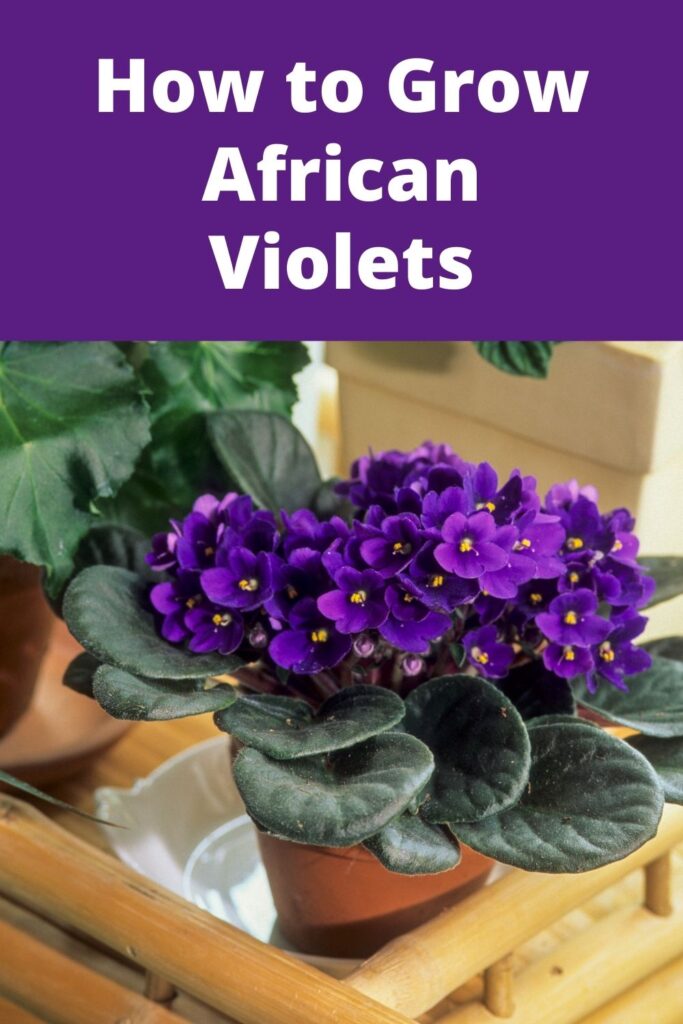African violets are one of the world’s most popular houseplants and for good reason. These compact, low-growing plants flower several times a year, and they are available in a multitude of leaf forms and colors. Don’t be put off by their reputation for difficulty: providing you follow a few simple rules, African violets should thrive indoors. With a little experience, it’s possible to keep them in flower nearly all year round and grow them to the size of dinner plates.
Varieties
African violets are available in a wide range of colors and types. You may choose from several hundred varieties depending upon the flower color, form and plant characteristics you prefer.
Flower color varies from blue to violet, lavender, pink, red-violet, blue-violet, lavender-pink and white. Flowers may be single, double, semi-double, star-shaped, fringed or ruffled. Some varieties produce flowers with two or more rows of petals on one color with the rest fringed in a different color. Leaf types are described as plain, quilted, spidered, ruffled, fringed, scalloped, spooned, pointed and variegated.
Plant sizes, depending upon variety, are classed as miniature (6 to 8 inches or less in diameter); semi-miniature (6 to 8 inches); standard (8 to 16 inches); and large (over 16 inches).
How To Care For African Violets Indoors
Although African violets are among the easiest plants to grow, their care still requires some attention. They need a temperature of 70° – 75 degrees Fahrenheit during daylight hours and 60 degree-nighttime lows that don’t drop below this range or they will suffer from root fungus problems.
They prefer a high humidity environment so low moisture levels can cause the plant some issues.
During winter if temperatures get down much below 60° move plants away from windows for the night time and close any window open at night to keep them warm and accumulate humidity inside your house or office space.
In nature, they live in moist African jungles, so if you want to recreate this environment for them, set them in an inch-deep pan or saucer filled with water and pile stones on top.
How To Water African Violets
One of the most important parts in caring for African Violets, is watering. One “best practice” many follow when it comes to caring for their violets and strengthening roots includes using self-watering pots that allow you water from below!
One of the major troubles that home gardeners run into with Saintpaulia is white spots forming on their leaves. In order to prevent this issue, it’s important to water from below so as not to splash your leaves, and also make sure you don’t over-wet them either by leaving pots sitting in a soak all day or giving too much water all at once.
The white leaf spots usually come from cold water splashing on the leaves. To prevent this, always use room temperature or warmer when watering your plants and a wick system will work too!
Lighting
African violets prefer bright, indirect light. Avoid direct sunlight and keep them at least a few feet away from bright south- or west-facing windows. An east- or north-facing window gives them the best lighting without the risk of burning their sensitive foliage.
Artificial lighting works well, too. Use fluorescent or LED bulbs to supplement natural lighting.
Thin, dark green leaves and leggy stems tell you that the plant is getting too little light; light green or bleached leaves indicate too much light.
Fertilizing
During the active growing season (spring and summer), fertilize every 2 weeks with a high phosphorous plant food. Only start to fertilize when the plant appears to need an extra boost (slow, thin growth; pale or yellowing leaves).
Over-fertilizing is a more common problem than under-fertilizing, since most soil mixes come infused with plenty of nutrients.
Propagating African Violets
African violets can be propagated from leaf cuttings or from offsets. Adult plants occasionally produce small plantlets or shoots from the side. Remove these and pot up independently. Removing them also encourages better blooms on the parent plant.
Potting and Repotting African Violets
African violets do better when they are slightly underpotted. Repot only when necessary into a pot that is one size up. To repot these plants, simply grab the plant as a whole, lift it, and replace it with a larger container, making sure not to damage their root systems in the process. Common signs that a plant is stressed out and needs to be repotted include falling leaves and overcrowding, as well as roots that protrude from the surface of the soil.1 Keep an eye out and repot if you think it’ll help.















